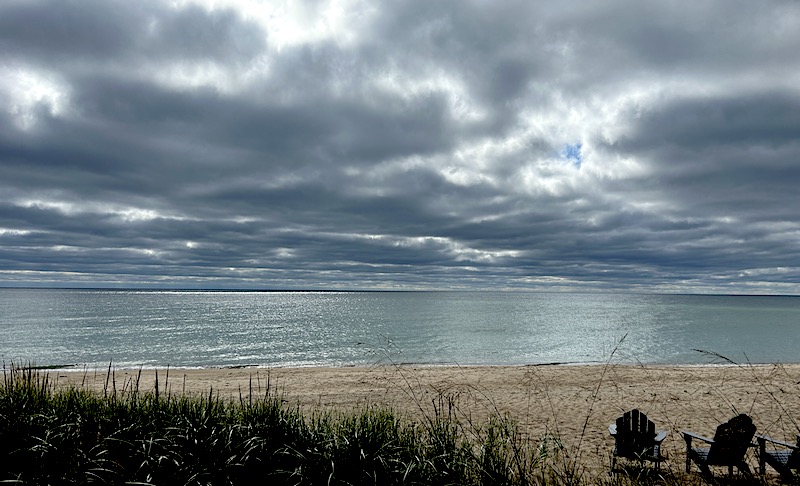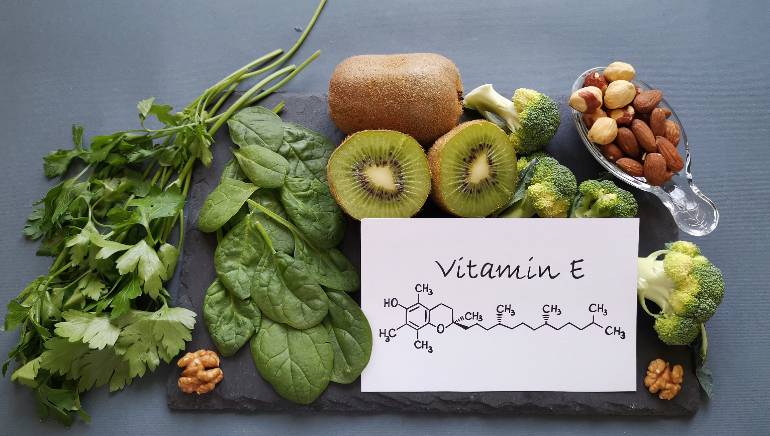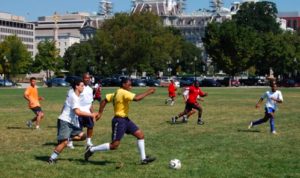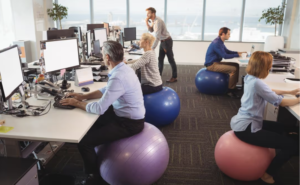
How’s Your Health? – Part 1
October 4th, 2023 - By Patrick T. McBriarty
Reconnecting these days, friends will inevitably ask, “so, how’s your health?” In short, my transformation has been amazing given my serious health struggle – shared in earlier blog posts. My recovery meant embracing what some might call “crazy” holistic practices. With the perspective of time and feeling good, I now think of this journey as a radical new commitment to deep “positive health.”
Coming out of the weeds of the ongoing efforts to recover, a new friend and fellow author Jane Doyle recently re-framed my health journey. She has a love for all things holy and spiritual, the movie Braveheart, Scottish faeries, yoga, belly laughs, and even greater love for angels. Her perspective and admiration for my journey re-framed and elevated my struggle to that of a “health warrior.” Wow, I like the sound of that, but what does it mean?
 Jane remarkably dealt with 30-years of chronic headaches and fatigue to forge her own path back to health. In her book You Heal You and author blog she shares her philosophy and reverence for willful individuals, who like us, have fought through the health care (not) system, which is all too often unable to address, let alone understand, chronic non-lethal health problems. As her website stated a couple months ago, the current system leaves individuals’ little option but to somehow find the strength within, “to fight societal pressures and refuse to accept a chronic condition or poor health for lack of a scientific or standard medical solution.” This leaves significant segments of the population adrift. Only significant additional efforts and strong will to seek out alternative remedies and treatments (often trial and error) will one then learn what works for them and potentially recapture their good health.
Jane remarkably dealt with 30-years of chronic headaches and fatigue to forge her own path back to health. In her book You Heal You and author blog she shares her philosophy and reverence for willful individuals, who like us, have fought through the health care (not) system, which is all too often unable to address, let alone understand, chronic non-lethal health problems. As her website stated a couple months ago, the current system leaves individuals’ little option but to somehow find the strength within, “to fight societal pressures and refuse to accept a chronic condition or poor health for lack of a scientific or standard medical solution.” This leaves significant segments of the population adrift. Only significant additional efforts and strong will to seek out alternative remedies and treatments (often trial and error) will one then learn what works for them and potentially recapture their good health.
The key question she asked me over lunch a few weeks ago kicked off the re-framing when she asked, “how did you develop the ability to find a path to good health on your own?” Essentially asking, “how I became a health warrior.” Prior to our conversation I saw my approach as stacking up “positive health” efforts and potential butterfly effects. Predicting the human body’s reaction to treatments given the collection of interdependent complex systems – cardiovascular, lymphatic, digestive, nervous, endocrine, skeletal, reproductive, and so on – let alone the subtle interactions across these systems seems to me incomprehensible. Yet the overall logic to do as many “positive health” practices each, day, week, and month and eliminate as many negative health behaviors as possible made perfect sense. Guided by Back to Natural Health taking a holistic approach beyond stacking up positive health I envisioned additional subtle improvements beyond my comprehension as butterfly effects. My hope was these unimagined multipliers (butterfly effects) might further enhance the expected benefits of my positive health efforts and discarding of bad habits.
The past 21-months of sustained effort and investment in time, better behaviors, and money (low five-figures) has brought back my good health. It was not just a worthwhile investment, but also brought about a transformation of my thinking and understanding of wellness, our environment, and how to better take care of ourselves and the world we live in — on both a micro and macro-level. Minor unexpected improvements I experienced besides better mood, health, and resilience include dramatic decrease in sensitivity to cold, better balance, healthier skin (less prone to sunburn), fewer gray hairs, eating less without hunger pains, and gradual weight loss without consistent exercise. Amazingly each of these additional changes exceed my experience pre-Covid.
As I explained it to Jane, this seemingly abrupt plunge into holistic medicine was overdue. I had been kidding myself about the resilience of my health and had decades of mildly destructive habits (drinking too much or too frequently, over eating, poor food choices, unreasonable self-expectations, and unreasonable self-judgment) that sorely needed changing. My December 2021 emergency hospital stay fueled a sudden fear of death, shattered my confidence in my health, and ramped up my anxiety (a life-long blind spot) to spur a new and deeper commitment to whatever it takes to feel better. Similar to Jane’s experience my visits to primary care and physician specialists also offered no clear map back to full health.
In answering Jane’s question, I began to realize my move toward becoming a health warrior had come as a gradual evolution throughout my child and adulthood experiences. Fortunate to have a good upbringing and solid education, as the oldest of four we were encouraged to think independently, develop strong problem-solving, critical thinking skills, and cultivate a healthy dose of pragmatism and skepticism. Our parents regularly encouraged us to learn by doing and fostered in us a strong foundation for coping with the world. More inclined toward athletics than my siblings, I also paid attention to health trends, fitness, nutrition, and practical ways to apply this information to various injuries and illnesses throughout my life. Coming from a modest middle-class background I am rigorous about good value (cheap, if you prefer ;). So alternative and holistic remedies for minor ailments, which are often inexpensive, fit well with our family and my own sensibilities.
 As an example, I am reminded of my random nose bleeds after joining the wrestling team and regularly getting my face smashed by a forearm or into the mat. So at 15-years-old visiting my cousins in Vermont, my Aunt Mary observing a sudden nose bleed suggested taking vitamin E. She explained how it had helped my cousin Timmy, who was a year older, alleviate similar bloody noses after he started playing football. Indeed boosting my vitamin E helped practically cure random nose bleeds. It was an early lesson in taking charge of one’s own health.
As an example, I am reminded of my random nose bleeds after joining the wrestling team and regularly getting my face smashed by a forearm or into the mat. So at 15-years-old visiting my cousins in Vermont, my Aunt Mary observing a sudden nose bleed suggested taking vitamin E. She explained how it had helped my cousin Timmy, who was a year older, alleviate similar bloody noses after he started playing football. Indeed boosting my vitamin E helped practically cure random nose bleeds. It was an early lesson in taking charge of one’s own health.
Not that the McBriarty’s did not regularly go to doctors for biannual dental check-ups, orthodontists for braces, childhood shots, and annual physicals. Doctors were definitely highly regarded, but our parents recognized doctors were also human and therefore at times fallible. So, if a doctor’s opinion seemed questionable we should not be shy, speak up, ask questions in the moment, or afterward seek out a second opinion. In addition, my lifelong fascination with survival stories often included protagonists who walked away from doctors and hospitals to follow their own path to recovery. Thus, my willingness to occasionally experiment and take a pragmatic approach to health. Not an outright radical, I do go to doctors for advice and treatment, but I also do my research and pay attention to see if the advice or prescription provided actually works for my body. In other words, trust but verify. And frequently check-in with myself to re-assess is this right for me (mind, body, and spirit).
 My first minor “chronic” health problem throughout middle school, high school and college was twisted ankles – usually sustained playing pick-up, club, and intramural sports, mostly soccer. Formalized medicine has little to say about twisted ankles beyond suggesting R.I.C.E. (Rest, Ice, Compression, Elevate) and, in my day, handing you an ACE bandage. However, doctors know little about how long, why, or when one should apply each of the RICE elements. So, as a teenager I was suddenly thrust into a medical gray zone and left to repeatedly figure out my own recovery from twisted and sprained ankles. Talking to friends and other athletes (there was no internet at the time) I tried to figure out what did and did not work for me to speed my recovery and return to uninhibited play.
My first minor “chronic” health problem throughout middle school, high school and college was twisted ankles – usually sustained playing pick-up, club, and intramural sports, mostly soccer. Formalized medicine has little to say about twisted ankles beyond suggesting R.I.C.E. (Rest, Ice, Compression, Elevate) and, in my day, handing you an ACE bandage. However, doctors know little about how long, why, or when one should apply each of the RICE elements. So, as a teenager I was suddenly thrust into a medical gray zone and left to repeatedly figure out my own recovery from twisted and sprained ankles. Talking to friends and other athletes (there was no internet at the time) I tried to figure out what did and did not work for me to speed my recovery and return to uninhibited play.
Once having a trainer tape my ankle for a practice allowed me to run, jump, kick, and dribble without fear of further injury. Wow what a difference! While not quite making the college soccer team, I was soon (with practice) taping my own ankles prior to intramural or men’s league soccer games. From writing the alphabet in the air with my toes, using a balance board, stabilizing stretches and exercises gleaned from physical therapy I had assembled a nice bag of tricks to aid recovery, strengthen my feet and ankles, and help prevent new ankle twists or sprains.
In 1989 a couple years out of grad school my next significant injury was a torn ACL. On a day off I was playing pick-up soccer on the Ellipse behind the White House. Having recently relocated to Annapolis, Maryland I had buzzed back to Washington D.C. to play in the regular lunch-time soccer games I had enjoyed the previous year working as an International Economist at the U.S. Department of the Treasury. Undefended on the wing I made a pass into the center. The ball was kicked back out to my left and behind me. Running at half speed, as I changed directions and rotated to chase the ball, my left cleat held in the turf while my left knee made a sharp snap I felt as much as heard. I collapsed to the ground, tearing up — half in pain and half from the realization this might mean the end of my soccer career (informal as it was). My new job at Viking Boat Supplies in Annapolis did not provide health insurance. This was the ‘80s. The concerned crowd of fellow players thinned once I got back to my feet and I eventually limped back to my car and drove home to Annapolis.
Twenty-five years old and strongly independent I never considered falling back on my parents in Ohio for help. I decided to rehab the knee myself, given arthroscopic knee surgery was still in its infancy at the time. Similar to a twisted ankle, I started the R.I.C.E. protocol and once the swelling and pain reduced got into the local pool to do range of motion exercises, stretches, and kicks to rehab and strengthen my knee. My instincts on finding the fine line between working out the sore and stiffness of my injury and not pushing too hard or aggravate it was greatly refined during this period. With patience and consistent effort I was able to do most sports as long as it did not involve quick rotations or pivots. So no soccer, basketball, tennis, or crazy dancing. For me the last three were no great loss, but for years afterward, I frequently woke-up from wistful dreams of uninhibited bouts playing soccer. Nonetheless, I enjoyed the straight-ahead sports of cycling, swimming, and running and soon discovered racing sailboats as a new competitive outlet. Eventually I even competed in triathlons for a couple years in my early 40s. It was not until twenty-years after my torn ACL that a subsequent torn meniscus prompted me to seek out an orthopedic surgeon to repair the torn cartilage and also graft a donated ACL (source unknown). Essentially, a two-for-one surgery to repair my knee.
 A third significant injury occurred in 2008 in the form of two bulging discs in my lower back. For decades I had been lifting incorrectly, abusing my back, and not using my legs to help lift. After a morning of returning a borrowed outboard and inflatable dinghy, bending over to tie my sneakers that afternoon a lightning bolt (of sciatica) shot down my leg knocking me to my bedroom floor. Lying on the carpet I burst out laughing, easing the tears, struck by the suddenly irony of having, “fallen and can’t get up.” A phrase we had great fun with of throughout college and graduate school harassing each other when hungover as a rift from the popular TV commercial at the time for an elder care remote alarm product. For months and months afterward I was plagued by chronic back pain. The incident initiated an earnest search for relief from various chiropractors, PT, massage, acupuncture, stretching and strengthening exercises, and later swimming and bicycling to gradually improve my range of movement and recovery.
A third significant injury occurred in 2008 in the form of two bulging discs in my lower back. For decades I had been lifting incorrectly, abusing my back, and not using my legs to help lift. After a morning of returning a borrowed outboard and inflatable dinghy, bending over to tie my sneakers that afternoon a lightning bolt (of sciatica) shot down my leg knocking me to my bedroom floor. Lying on the carpet I burst out laughing, easing the tears, struck by the suddenly irony of having, “fallen and can’t get up.” A phrase we had great fun with of throughout college and graduate school harassing each other when hungover as a rift from the popular TV commercial at the time for an elder care remote alarm product. For months and months afterward I was plagued by chronic back pain. The incident initiated an earnest search for relief from various chiropractors, PT, massage, acupuncture, stretching and strengthening exercises, and later swimming and bicycling to gradually improve my range of movement and recovery.
I never seriously considered back surgery given conversations with anyone I met who ever had back surgery. Sadly these folks usually end up back (no pun intended) for a second or third surgery within a few years and struggle with ongoing pain and discomfort. So, I dealt with the pain and kept working toward my own recovery. A huge step forward was the suggestion to sit on a Swiss ball (or exercise ball) instead of a chair at work. This was a significant turning point, given sitting for long periods it the worst for lower back pain. At the time a well-paying consulting gig at Kraft Foods was on offer, which included a great deal of computer work (lots of sitting) and would have been miserable without this option. So, I let the jokes by co-workers about sitting on a large blue ball roll off, usually thinking to myself with a smile, “who is the wiser?”
 I continued my mix of ad-hoc treatments based on what felt good and seemed to work. Finally, one day I woke up with a feeling something was very different. I lay in bed scanning my body wondering what was wrong? After a couple minutes it seemed clear nothing hurt. It finally occurred to me . . . OMG, I was PAIN FREE! Finally, 20-months of consistent work, trial and error, and intuitive effort had paid off. The next immediate revelation was how amazing it was to finally be free of pain! And, how much damn energy ongoing pain can suck out of your day, month, and year!
I continued my mix of ad-hoc treatments based on what felt good and seemed to work. Finally, one day I woke up with a feeling something was very different. I lay in bed scanning my body wondering what was wrong? After a couple minutes it seemed clear nothing hurt. It finally occurred to me . . . OMG, I was PAIN FREE! Finally, 20-months of consistent work, trial and error, and intuitive effort had paid off. The next immediate revelation was how amazing it was to finally be free of pain! And, how much damn energy ongoing pain can suck out of your day, month, and year!
Thereafter as long as I generally maintained a strong core, more consistently use my knees to lift, continue to sit on an exercise ball for work, and mix stretching into my days I can easily do almost anything I want. I did try several times to slowly build-up into running shape, but after a couple weeks, whether run-walking on pavement or sand, the gradual increasing aggravation to my lower back forced me to quit. Adding it all up I still felt grateful. Not being able to run as a workout seemed a small price to pay to avoid chronic pain and mostly ineffective surgery. Since then I have been able stay active and continue to bicycle, swim, hike, travel, race sailboats, and most other activities.
In hindsight, catching Covid in late March 2020, Long-Covid, and the subsequent health crisis in December 2021 has been a blessing in disguise. The lesson of visiting doctors, research, networking, and changing my daily habits, diet, and routines I have found a new health protocol, which I believe will allow me to age gracefully and to stay active much longer than most of my peers. Thanks to science and mainstream medicine offering no real cure I have upped my commitment and exploration and graduated into a full-blown health warrior.
Just how I accomplished this will be detailed in the forthcoming part two of “How is Your Health?”


October 16th, 2023 at 8:00 am
You have lived the life of “making lemonade out of lemons.” …. Great read!